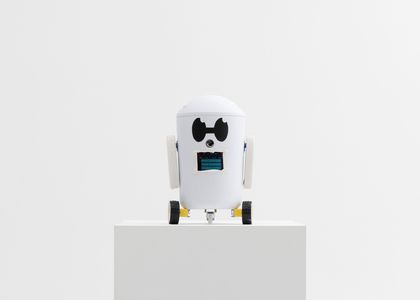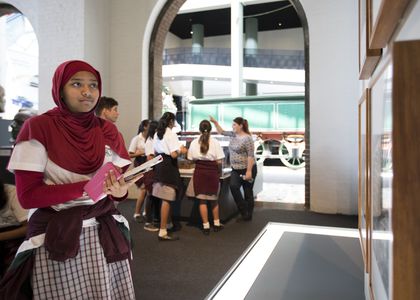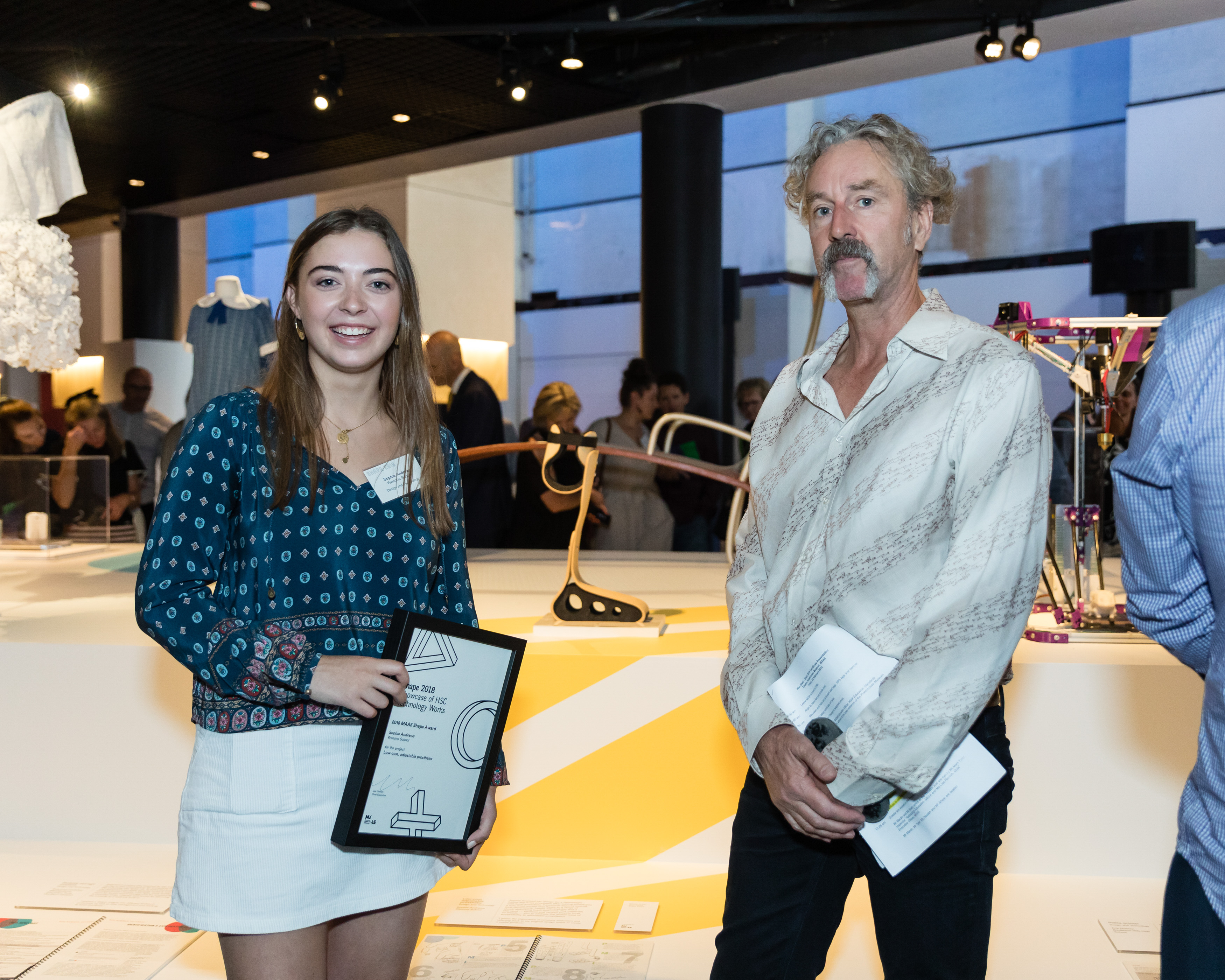
Shape 2018 is a showcase of exceptional year 12 student work from the syllabus areas focused on design and technology – Design and Technology / Textiles and Design / Industrial Technology. This year MAAS has 37 examples on show from around New South Wales. During its early weeks in the gallery, Shape experiences visitation from school groups just starting their year 12 major projects in these subjects. Hungry to see what a well-executed year 12 project look like, these students pore over the case studies and keenly absorb the work.
Although the biggest audience for Shape is this fresh bunch of year 12 students attempting the same subjects, the exhibition appeals to our wider audiences who can admire and appreciate the efforts of our next-generation of designers.
Each year I interview a handful of students to create case studies which help unpack the experience of the previous year and explore how they met the challenge. I am astounded by the quality of their work and their dedication through adversity to seeing their projects to fruition. Their responses to my enquiries are informed, eloquent, enthusiastic and encouraging for the next generation of students. The case studies were selected across the curricula and reflect some of the best work in the exhibition.
The students included in Shape 2018 exhibit a thorough understanding of the design process, materials and their application, human-centred design and an appreciation of contemporary environmental and community concerns and have applied themselves to these needs.
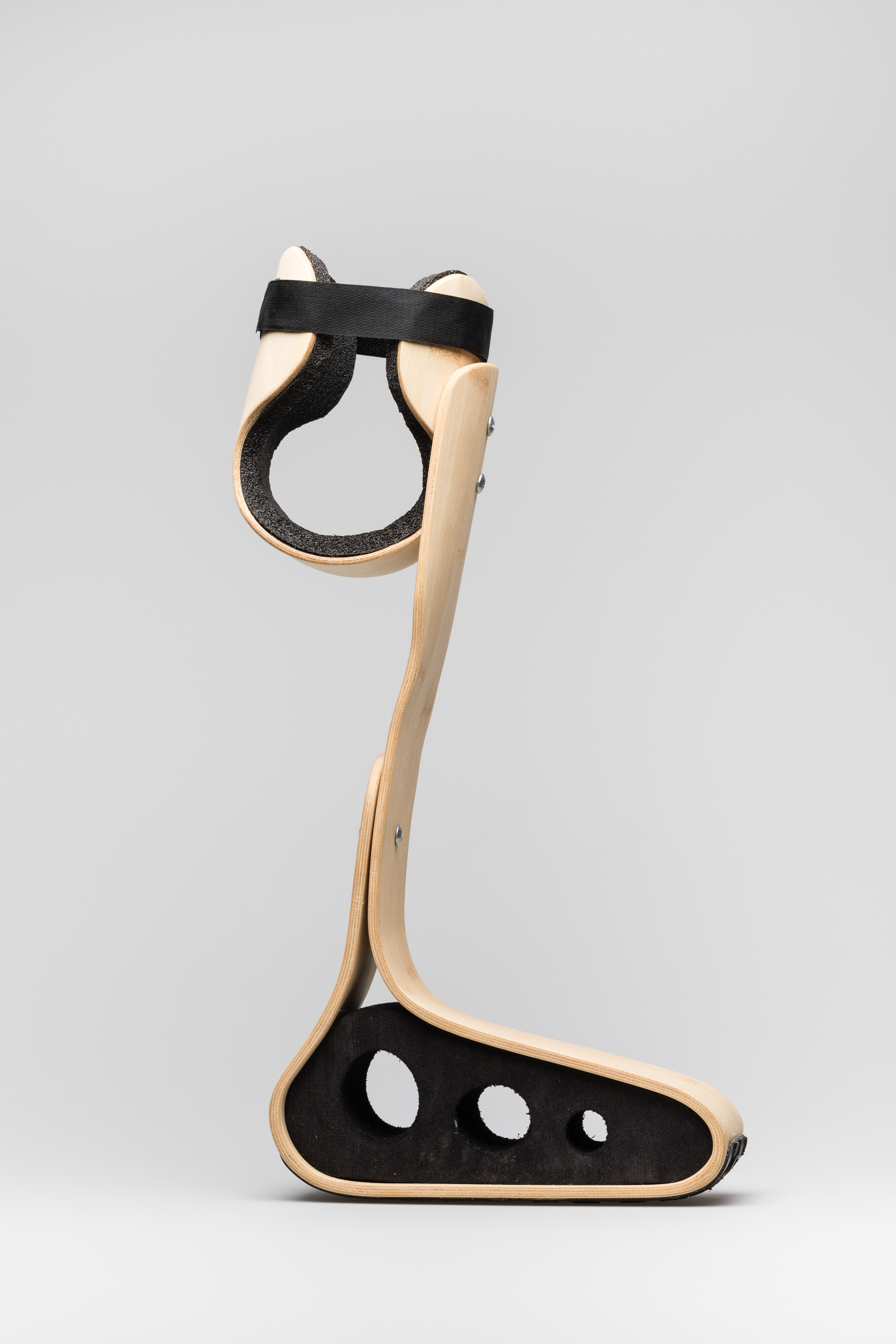
Each year MAAS recognises one student from the Shape exhibition for a project which demonstrates a thorough realisation of its intention, an exceptional understanding of process, and in its execution exhibits high production values. MAAS continues to recognise innovation (for example use of new materials, new design or fabrication, or a new or improved design for an existing product), but also recognises projects which exemplify creative expression or inspire; consider deeply and employ sustainable materials or embody sustainable (cradle to grave) ideals; offer a solution to problems of inclusivity, accessibility or equity and consider social outcomes and impacts in their design, use or application.
The winner of the MAAS Shape Award this year, Sophie Andrews, from Wenona School, applied herself to the development of a low-cost prosthetic. Sophie identified the extraordinary need for an accessible and affordable prosthetic after seeing first-hand the devastating impact in communities experiencing a disproportionate number of amputees because of injuries from unexploded bombs.
Sophie chose sustainable materials – the form is moulded laminated bamboo and the tread is made from used bicycle tyres. It was a challenge to rein in costs with the temptation of costly solutions. But by maintaining an awareness of this, Sophie remained focused on producing a design which did not require complex manufacturing technology. Functional aspects include a fully lined socket that flexes to a range of limb dimensions, height adjustability and a shock-absorbing foam foot core.
Sophie finalised her design for a lightweight below-the-knee prosthetic after testing prototypes with local amputees. Sophie’s design aim was to address the global issue of accessibility to affordable prosthetics. The prosthetic clearly demonstrates a dedication to the challenge.
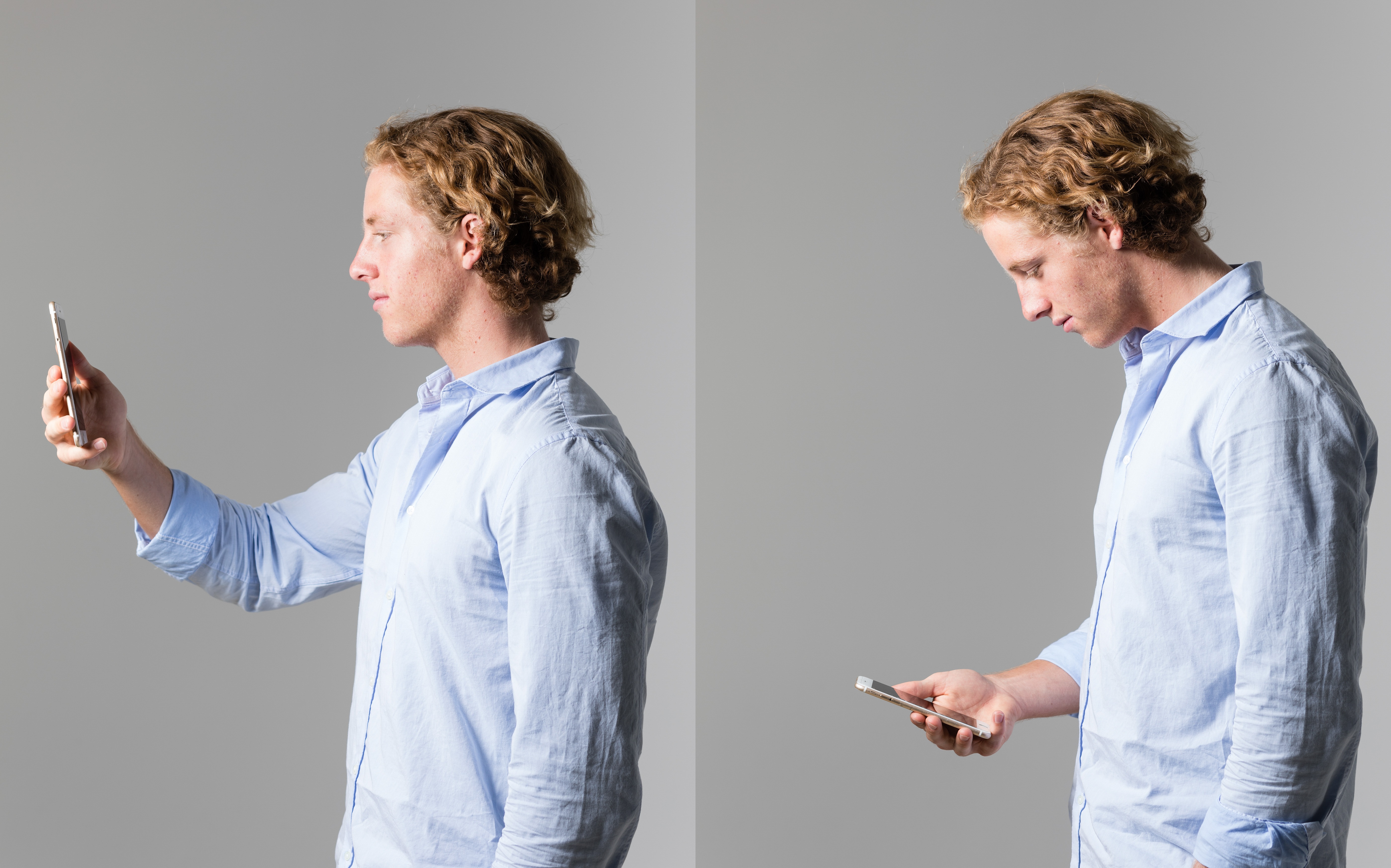
Other stand out projects which became case studies in the gallery include:
- Davidson High School student Amy Holland’s Industrial Technology major project – a stop-motion animation titled Facts About Humans – it demonstrates a mastery of her chosen medium and its aesthetics.
- Also in Industrial Technology, Maurizio Pagano, from William Carey Christian School, who built a fully-functional pedal car.
- Oliver Bowman from St Luke’s Grammar School studied Design and Technology and developed an application for smart phones which aims to reduce the incidence of Text Neck – the result of poor posture when using smart phones.
- Lilah Thompson who studied Textiles and Design at Newtown High School of the Performing Arts and created “El Detalle”, a garment inspired by her experiences of Gaudi architecture in Barcelona.
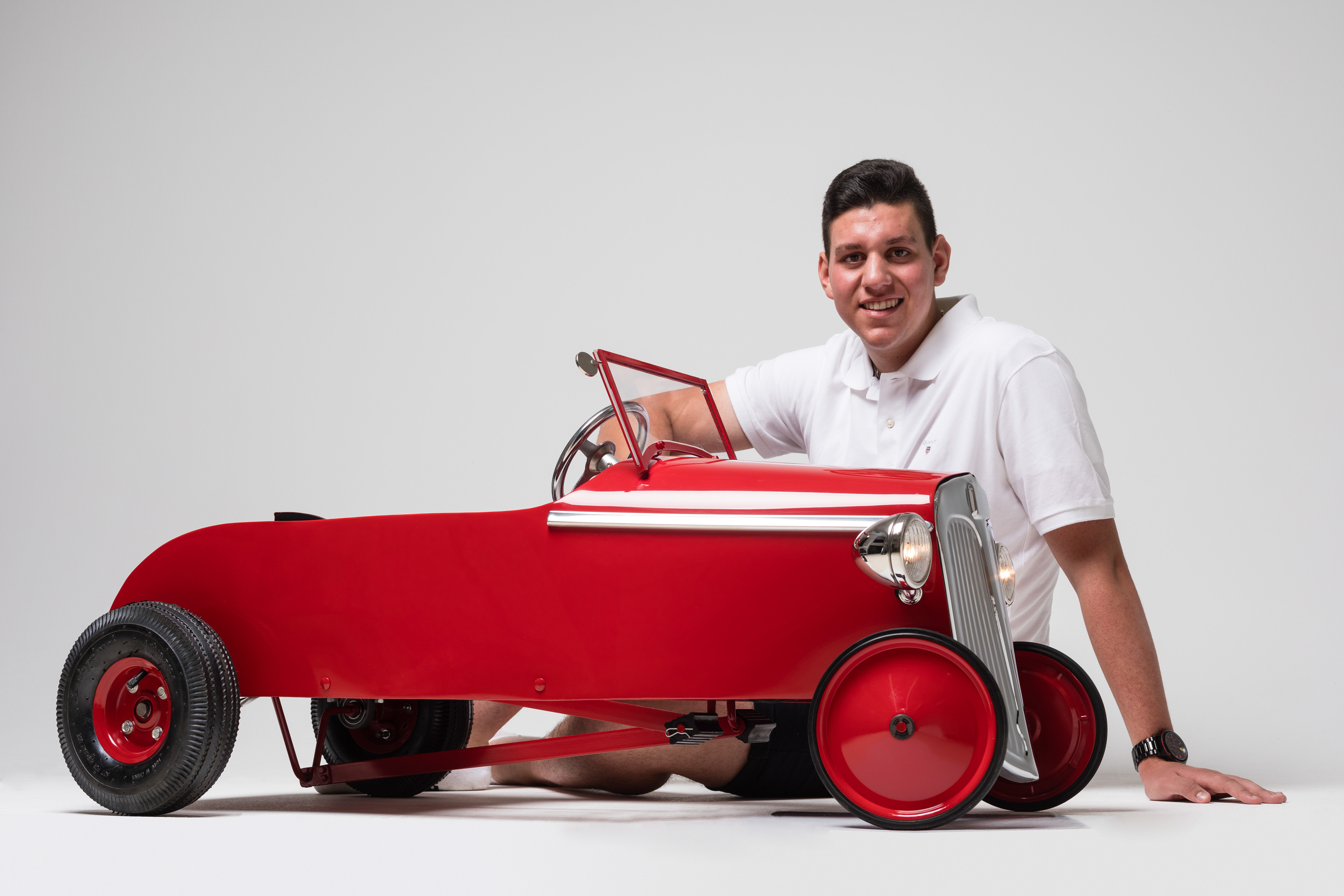
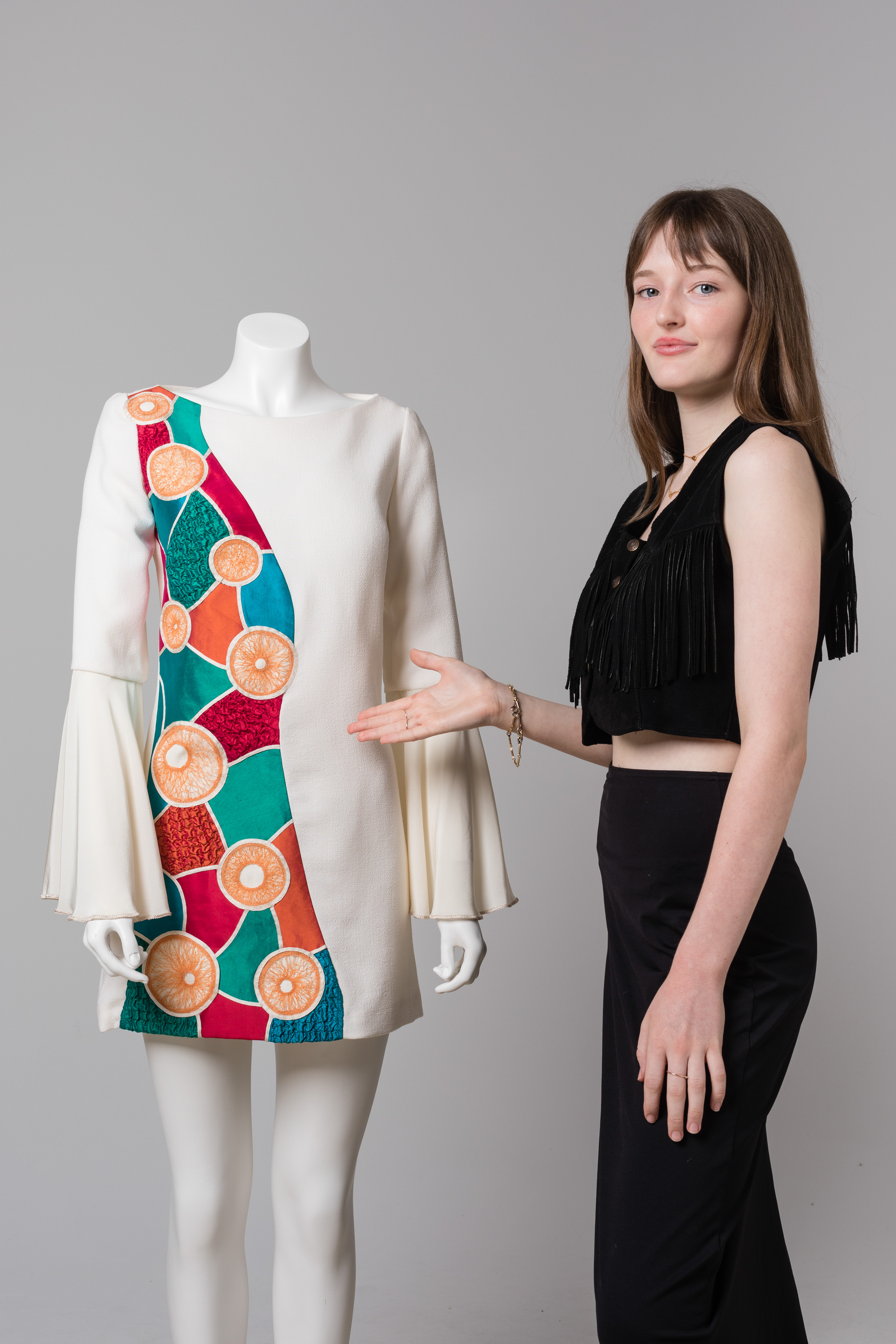
Shape 2018 is on at the Powerhouse Museum until 5 May 2019.
